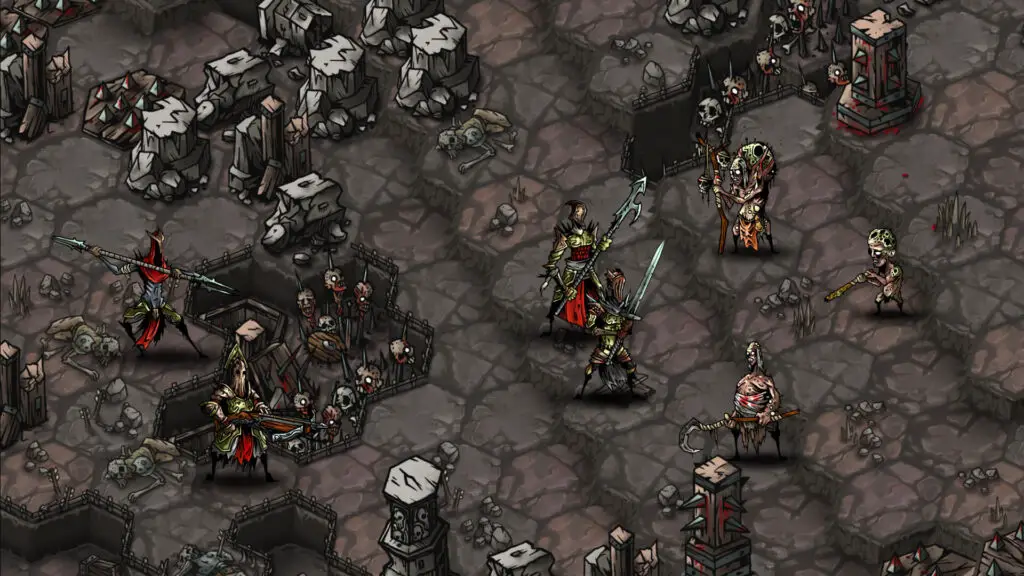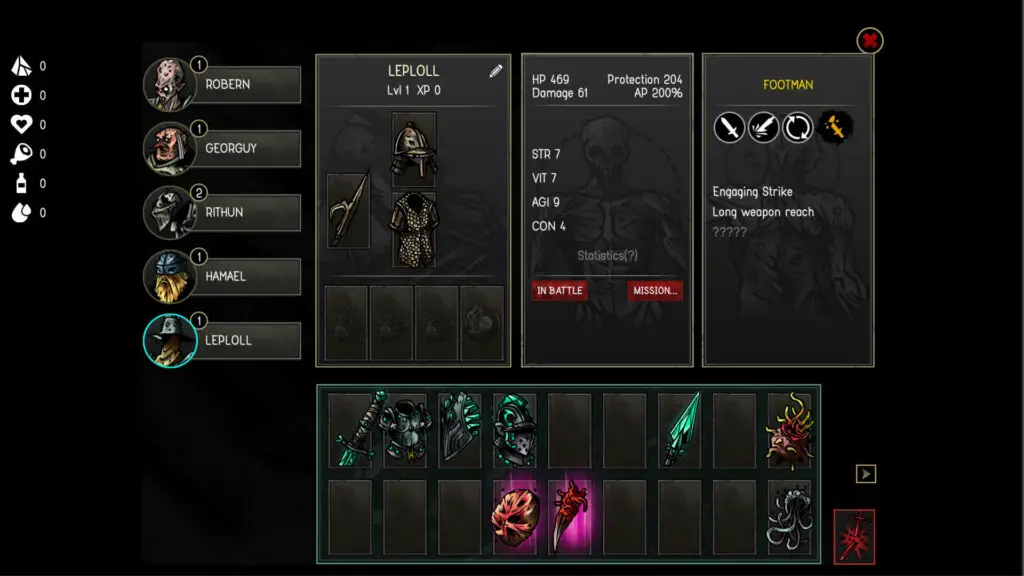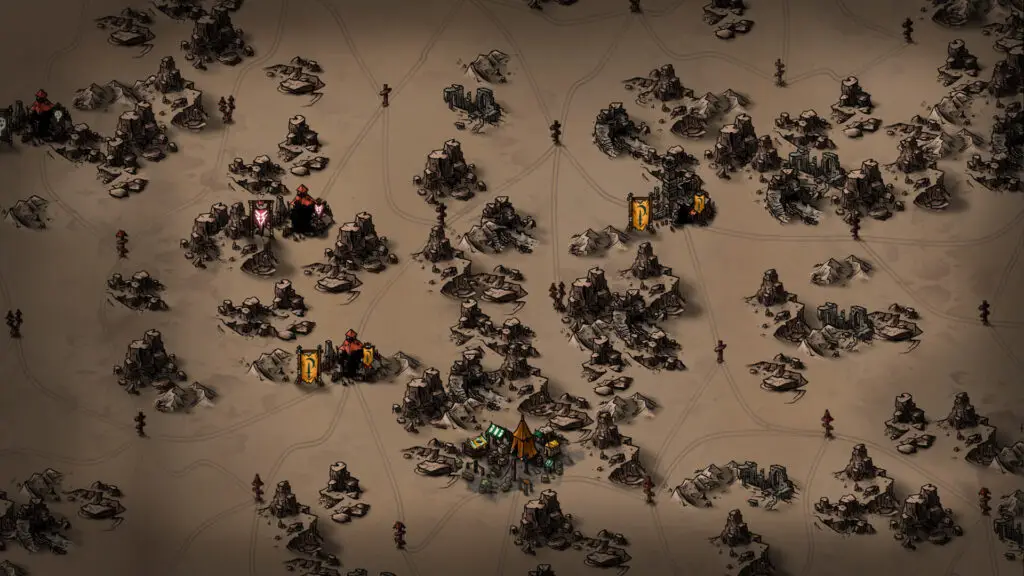Can you imagine anything more painful to endure that the destruction of your elite phalanx of hoplites, the loss of a fleet carrier during the battle of Midway or the death of one of your veteran squad members in a squad-based game?
Despite the agony of these moments, we keep coming back, determined that this run will see us overcome the enemy, level up the right way and find that missing synergy that we couldn’t’ find last time out.
Some games seem to positively revel in the experience of torturing us. Games like Battle Brothers or Darkest Dungeon can always find a new way to kill your best character, to shatter your best-laid plan, or to present a new variant on the most challenging or fiendish enemy.
So imagine a game that is somewhat of a cross between Battle Brothers and Darkest Dungeon and I’m sure you’ve pictured a game that’s nigh on impossible with a truly sadistic mind that will make you regret loading it up? But Urtuk: The Desolation, which feels like a cross between these two great games, is actually not nearly as hard as you may expect.

Set in a mysterious, blighted land that has a post-apocalyptic feel to it. Described as a “low fantasy” world, you won’t find elves, dwarves or even orcs. You’ll also seldom see anything magical as the game comes across as brutal and dark, with an esoteric feel to it. The lovely hand drawn graphics lend the game a distinct look and some of the more unusual enemies are truly horrific to behold!
Urtuk sees you start the game with a small party of three, which can expand out to six deployed into any battle, with more “on the bench”. But you’ll always be outnumbered, often heavily so. The “overworld” map, again hand drawn, is a blighted and somewhat desolate place, dotted with villages, quests to undertake and the odd roving party that could want to cross blades with you.
Sooner, rather than later, you’ll run into some beasts that want to tangle and the game will switch to the tactical map as you’ll see a tiled map, drawn in drab coloured hexes. Even the maps are not very friendly, with rough terrain that, in places, will cause damage to your guys as they cross it. There are even lethal spiked pits that will be instant death for anyone unlucky enough to be knocked into them.
Your characters will then engage in turn-based battle with the enemy. Clever use of turn order can help here too as, ala Chimera Squad, you can interrupt or attack an enemy before its their turn. Combat is brutal, with great splashes of blood and lumps of meat flying away when you make a successful hit and your characters becoming increasingly bloody as they take damage.

Your characters are split across more than a dozen character classes, though they can be roughly bundled into damage absorbing tanks (like the Guardian or Footman), damage dealers (like the assassin or the berserker) ranged attacks (like the hunter) or finally support classes (such as the priest). The careful use of these characters, their skills and terrain is necessary as fighting from higher ground will give you an edge over your enemies. Equally using skills such as the footman’s “ram” which can traverse dangerous terrain without damage or the Guardian’s shield bash which can knock an enemy into a lethal spike pit can even out the odds.
Damage is dealt to hit points unless the character has armour, in which case their armour will need to be broken in order to do them damage. However, armour is not available to all character classes and largely concentrated onto the “tank” classes. As you defeat enemies and loot better gear, you’ll be able to deal more damage and turn back harder attacks.
Characters level up too, gaining XPs for battles fought in and gaining a chance to increase their four base stats. There’s no skill-tree here, which does set it apart from the likes of Battle Brothers or XCOM. Instead, an intriguing variation on theme is that you can pick up “Mutators” which you can assign to a character to give them interesting changes and status affects such as “acid” which will eat at an enemy’s armour. Mutators will, however, reduce the character’s max HPs but the longer they use them, the more chance they have of gaining an affiliation with the mutator, reducing its reduction in HPs.
Urtuk is a great achievement, especially for a new producer, and has a distinct visual look, a great deal of charm and a huge amount of depth to the tactical combat.
Characters can also unlock traits by performing specific actions, such as a number of kills in one battle or supporting another character. Another interesting twist here is that you’ll not know what these are until you perform one during a battle, in which case you’ll usually need to do it another nine times to unlock its bonus effects.
The game is dangerous and bloody but not as lethal as you might fear. Whilst there is perma-death, characters can be knocked out in battle once without fear and then can be cured with the hard-to-find resource of medicine. If a character is wounded a second time without being healed, then they are dead. However, you do get chances to recruit new characters to build up your party as you go.
Urtuk is a great achievement, especially for a new producer, and has a distinct visual look, a great deal of charm and a huge amount of depth to the tactical combat. Positioning, unit synergies and having a broad array of characters really matter here. You’ll get an automatic critical if you can flank an enemy by engaging him with another character, which is a huge edge.

Still, there are some teething issues with Urtuk. Both maps are quite bland to look at, with a lot of setting-appropriate dull hues but it isn’t much fun to look at and at times it can be hard to tell where you can go. There are keyboard shortcuts to help with this and icons pop up if you’re going to walk over spaces that will deal you damage. Still, I often found myself unable to reach an enemy due to there being no way down. The maps can quite often only have one viable route to reach the enemy too which can be a bit awkward.
Whilst there a lot of ways to customize your characters, they often generally look quite similar so if you have two hunters, they’ll look very similar to each other. It’d be great if you could choose between a few different heads or bodies, maybe the colour of the armour or cloak for your squad to help you get to identify with them a bit more. Equally with no skill-tree, you have far fewer ways to build characters the way you want them.
Whilst there’s a large variety in enemies, battles can start to get a bit “samey” after a while and the campaign, whilst long, never quite caught my attention the way I’d like it to. Still the game is still only just out of early access and the developer has an excellent reputation for responding to feedback.
There’s also no multiplayer at this time, though it may be implemented later on. The developers also speak of there being a final quest but that there is no “end game” so you can keep your favourite run going for as long as you want. But part of the appeal of Urtuk will be finding new combinations of character classes, mutations, and weapons to see what you can do. Whilst Urtuk perhaps offers slightly less of brutal experience than you may have been initially gearing up for, there are several difficulty levels so you can always turn the screw on yourself if you feel that the game isn’t sufficiently challenging.









